Related Research Articles

The 1921 Canadian federal election was held on December 6, 1921, to elect members of the House of Commons of Canada of the 14th Parliament of Canada. The Union government that had governed Canada through the First World War was defeated, and replaced by a Liberal government under the young leader William Lyon Mackenzie King. A new third party, the Progressive Party, won the second most seats in the election.
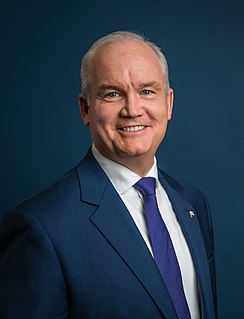
The leader of the Official Opposition, formally known as the leader of Her Majesty's Loyal Opposition, is the politician who leads the Official Opposition in Canada, typically the leader of the party possessing the most seats in the House of Commons that is not the governing party or part of the governing coalition. The current Opposition leader is Erin O'Toole, who took office following his election as leader of the Conservative Party of Canada on August 24, 2020.

The Conservative Party of Canada has gone by a variety of names over the years since Canadian Confederation. Initially known as the "Liberal-Conservative Party", it dropped "Liberal" from its name in 1873, although many of its candidates continued to use this name.
The Unionist Party was a centre-right historical political party in Canada, composed primarily of former members of the Conservative party with some individual Liberal Members of Parliament. It was formed in 1917 by MPs who supported the "Union government" formed by Sir Robert Borden during the First World War, who formed the government through the final years of the war, and was a proponent of conscription. It was opposed by the remaining Liberal MPs, who sat as the official opposition.
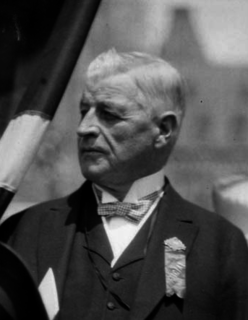
Hugh Guthrie, was a Canadian politician and Cabinet minister in the governments of Sir Robert Borden, Arthur Meighen and R. B. Bennett.
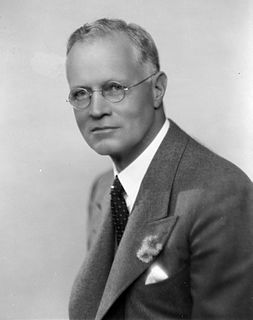
Robert James Manion was a Canadian politician best known for leading the Conservative Party of Canada from 1938 until 1940.
Liberal–Unionists were supporters of the Liberal Party of Canada who, as a result of the Conscription Crisis of 1917 rejected Sir Wilfrid Laurier's leadership and supported the coalition Unionist government of Sir Robert Borden.

The 1925 Canadian federal election was held on October 29, 1925 to elect members of the House of Commons of Canada of the 15th Parliament of Canada. The Conservative party took the most seats in the House of Commons, although not a majority. Prime Minister William Lyon Mackenzie King's Liberal Party was invited to form a minority government. Unlike the Conservative party, King's Liberals had the conditional support of the many Farmer/Progressive MPs.
The first Progressive Conservative Party of Canada leadership election was held in 1927, when the party was called the Conservative Party. Prior to then the party's leader was chosen by the caucus or in several cases by the Governor General of Canada designating a Conservative MP or Senator to form a government after the retirement or death of an incumbent Conservative Prime Minister.

In Canada, Her Majesty's Loyal Opposition, or simply the Official Opposition, is usually the largest parliamentary opposition party in the House of Commons of Canada, either on its own or as part of a governing coalition, although, in certain unusual circumstances, it may be a third or fourth-largest party or even the largest party.

During the history of Canadian politics, twelve minority governments have been elected at the federal level. There have also been two minority governments resulting from governments being replaced between elections, for a total of fourteen federal minority governments in twelve separate minority parliaments. There have been historical cases where the governing party had fewer than half of the seats but had the support of independents who called themselves members of the party; these cases are not included, as there was never any serious chance of the government falling.

The 1926 Canadian federal election was held on September 14, 1926 to elect members of the House of Commons of Canada of the 16th Parliament of Canada. The election was called after an event known as the King–Byng affair.
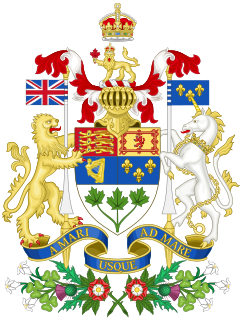
The 15th Canadian Parliament was in session from January 7, 1926, until July 2, 1926. The membership was set by the 1925 federal election on October 29, 1925, and it changed only somewhat due to resignations and by-elections until it was dissolved prior to the 1926 election.

Arthur Meighen was a Canadian lawyer and politician who served as the ninth prime minister of Canada, in office from July 1920 to December 1921 and from June to September 1926. He led the Conservative Party from 1920 to 1926 and from 1941 to 1942.

John Hampden Burnham was a politician and lawyer. He was elected to the House of Commons of Canada as a Member of the Conservative Party in the election of 1911 to represent the riding of Peterborough West after being defeated in the election of 1908.
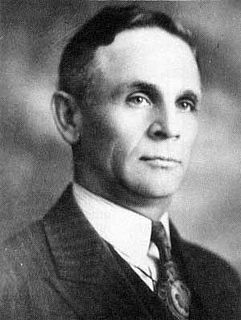
The 1942 Progressive Conservative Party leadership election was held to choose a leader to replace Arthur Meighen for the newly named Progressive Conservative Party of Canada.

A Conservative leadership convention was held on October 12, 1927 at the Winnipeg Amphitheatre in Winnipeg, Manitoba. The convention was held to choose a new leader of the Conservative Party to choose a successor to former Prime Minister of Canada Arthur Meighen who had led the party since 1920. This was the first time the Conservatives used a leadership convention to choose a leader. Previous leaders had been chosen by the party's caucus, the previous leader, or by the Governor General of Canada designating an individual to form a government after his predecessor's death or resignation.

This article is the Electoral history of Robert Borden, the eighth Prime Minister of Canada (1911-1920).

The article is the Electoral history of Arthur Meighen, the ninth Prime Minister of Canada.
References
- 1 2 "MEIGHEN, ARTHUR". Dictionary of Canadian Biography. University of Toronto/Université Laval.